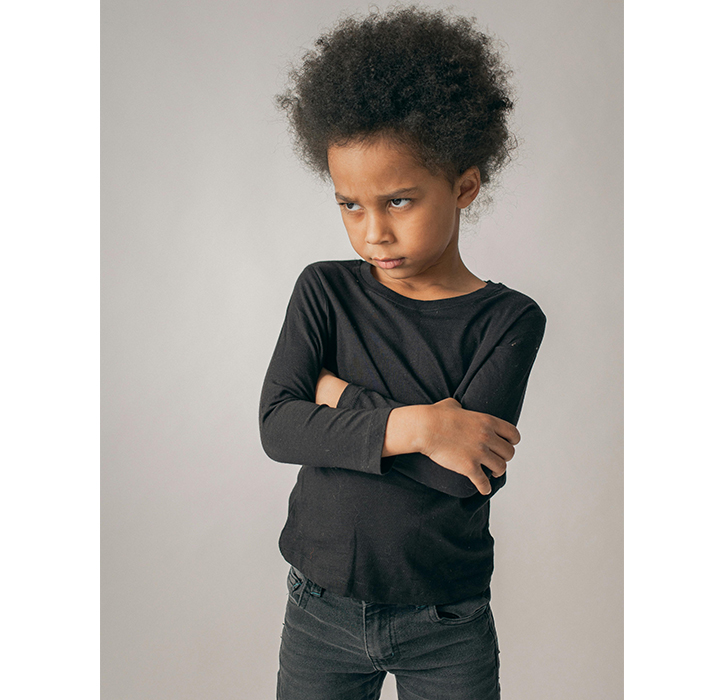8.2 Disproportionate Representation in Juvenile Justice
The title of this chapter includes the term “racialization of juveniles.” What does this mean to you? Depending on your own racial identity, this term may mean something different to you than to another of your classmates. Perhaps that makes it sound like there are a bunch of racist adults out there trying to wrangle up all the kids of color they can get their hands on and lock them away for as long as possible. There are points in history where this may have been the case, and this chapter will explore those practices. Currently, though, we look at a system that does not include these obvious and overt racist practices and can easily think the kids getting in trouble are the ones who should be getting in trouble, and the juvenile justice system is simply responding to the delinquent behaviors of “bad” kids. In this chapter, we will look at historical practices and see how the juvenile justice system has changed its methods over time, but has still resulted in significant racial disparities – and not because of the delinquent behaviors of “bad” kids.
Disproportionate representation means that the percentage of youth of one race in the country does not align with the percentage of youth of that same race in the area we are examining (in this case, delinquency cases). The National Center on Juvenile Justice reports in their Juvenile Court Statistics for 2020 how delinquency cases that went through the courts were distributed across different races, as shown in Figure 8.2 (Hockenberry and Puzzanchera, 2023). As this data shows, particularly for Black youth, there is a mismatch.
| Race | General Population of Juveniles in the United States | Racial Profile of Delinquency Cases in 2020 |
|---|---|---|
| White | 53% | 43% |
| Black | 15% | 35% |
| Hispanic | 24% | 19% |
| American Indian | 2% | 2% |
| Asian | 6% | 1% |
For example, if 15 percent of American youth are Black, we would expect roughly 15 percent of delinquency cases to involve Black youth. However, as you see in Figure 8.2, 35 percent of delinquency cases involve Black youth, far higher than the expected 15 percent. As discussed in Chapter 2, specific to the juvenile or criminal justice systems, this overrepresentation of people of color in the system is referred to as disproportionate minority contact (DMC). Although this data makes it seem like youth of color are simply committing more delinquent or criminal acts than their white peers, lots of research shows that is not the case. We will explore and explain DMC for youth in this chapter.
Learn More: School Resource Officers and Students of Color

Two Orlando, Florida, police officers arrested a 6-year-old Black girl (about the same age as the girl in figure 8.3) for throwing a temper tantrum in her first-grade class, walking her from school to their squad car with zip ties around her tiny wrists because the handcuffs they tried to place on her were too big. In Denver, a 7-year-old Black boy was handcuffed and dragged across a school hallway for getting into a shoving match with another student (Ball, Zhang, and Molloy, 2022). In Tennessee, four Black girls were arrested from their elementary school for not stopping some young boys from fighting (Guzman, 2022). A 6-year-old Black boy was arrested in North Carolina for picking a tulip while waiting for his school bus (Wiltz, 2021). In New York City, a 12-year-old Latina was arrested for writing a smiley face and a message about how she loves her friends on her desk with a green marker. She was handcuffed behind her back and walked across the street to the police station. In California, an 11-year-old Black boy was handcuffed and held face-down on the floor by an officer pressing her knee into the 70-pound child’s back, all for refusing to go to the principal’s office after throwing a rock at a staff member.
In Rochester, New York, a 9-year-old Black girl who was causing a disturbance in the snow was handcuffed, put in the back of the police car, and pepper-sprayed. Body cam footage shows the girl crying and begging the officer to stop. The video records this conversation (Guzman, 2022):
Nine-year-old Black girl: “Please don’t do this to me.”
The adult white male officer: “You did this to yourself.”
Nine-year-old Black girl: “It’s burning my eyes.”
Adult white male officer: “That’s the point of pepper spray.”
Adult white male officer: “You’re acting like a child.”
Nine-year-old Black girl: “I am a child.”
A study of law enforcement in schools (school resource officers or SROs) found that while all the 73 officers they interviewed cared deeply about keeping the school safe, where they worked determined who they were keeping the school safe from. SROs working in upper-class white areas saw the threat to school safety as an external problem that could hurt the students. However, SROs who worked in lower-income schools with more students of color saw the threat to school safety as the students themselves (Fisher et al., 2022). This view of youth of color as threats is the basis for the phenomenon discussed in this chapter.
Check Your Knowledge
Licenses and Attributions for Disproportionate Representation in Juvenile Justice
Open Content, Original
“Disproportionate Representation in Juvenile Justice” by Taryn VanderPyl, revised by Jessica René Peterson, is licensed under CC BY 4.0.
Figure 8.2. Table by Taryn VanderPyl is licensed under CC BY 4.0.
Open Content, Shared Previously
Figure 8.3. Photo of a young Black girl by Monstera Production is licensed under the Pexels License.
a category of people grouped because they share inherited physical characteristics that are identifiable, such as skin color, hair texture, facial features, and stature
overrepresentation of ethnic, racial, and linguistic minority youth in the juvenile system

